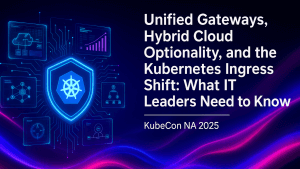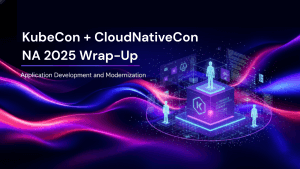Modern enterprise IT environments are becoming increasingly complex. From cloud-native applications to distributed edge architectures, IT teams are inundated with a constant flow of data, alerts, and incidents that demand rapid analysis and remediation. Traditional AI or observability solutions have provided incremental improvements but often fall short in automating the “last mile”, the critical step of turning insights into timely, reliable action.
Fabrix.ai, recently rebranded from CloudFabrix, aims to close that gap with its Agentic AI–driven operational intelligence platform. In a recent discussion, Shailesh Manjrekar, Chief AI and Marketing Officer at Fabrix.ai, outlined how the company’s approach, built on data fabrics, intelligent agents, and low-code operations, seeks to transform IT operations by combining reasoning and action with enterprise-grade guardrails.
Differentiating in a Crowded Market
The AIOps and observability landscape has become fragmented, with organizations often relying on siloed, domain-specific tools. While these solutions have been effective at capturing signals and generating alerts, they have struggled to correlate events across domains or automate resolution without manual intervention.
According to Manjrekar, this “last mile problem” has constrained the effectiveness of traditional AIOps. Practitioners still found themselves interpreting dashboards, triaging incidents, and applying expertise manually. Fabrix.ai’s answer is to introduce agentic AI, which leverages large language models (LLMs) not only to analyze information but also to reason, deliberate, and execute responses.
“LLMs provide the capability to reason and act,” Manjrekar explained. “The challenge lies in controlling their stochastic, non-deterministic nature. Our platform is purpose-built to provide the guardrails that enterprises need to safely operationalize AI in real-time environments.”
The Role of the Data Fabric
At the heart of Fabrix.ai’s platform is its data fabric, a unified data foundation designed to support streaming, real-time IT operations data. Unlike retrieval-augmented generation (RAG) models that rely heavily on indexed data, Fabrix.ai’s fabric integrates more than 1,700 data sources through pre-built connectors and bots.
The data fabric performs enrichment by normalizing and contextualizing telemetry across domains. This ensures that LLMs operate on curated, accurate, and timely information, significantly reducing the risk of hallucinations. Beyond enrichment, the fabric supports telemetry pipelines, enabling routing to multiple sources and providing semantic overlays that allow AI agents to act with higher precision.
“The data fabric ensures that AI agents don’t operate in a vacuum,” Manjrekar noted. “It’s the semantic layer and enrichment that give context to raw data and prevent AI from making unreliable inferences.”
Addressing Operational Challenges
Enterprise IT teams consistently report pain points, including alert fatigue, inaccurate CMDBs, and siloed incident response. Fabrix.ai tackles these through real-time topology discovery and application dependency mapping. The platform not only correlates alerts across domains but also integrates bidirectionally with IT service management tools, updating CMDBs to become accurate sources of truth.
This functionality is particularly valuable in environments where AI agents themselves create new operational demands. Traditional ITIL practices, while effective for structured workloads, were not designed for the fluidity of agentic workflows and AI-generated processes. Fabrix.ai positions its platform as bridging that gap by dynamically discovering dependencies and updating operational intelligence in real time.
Deployment and Time to Value
One of the critical concerns for organizations evaluating new platforms is how quickly they can achieve measurable outcomes. Fabrix.ai emphasizes speed through its bot-driven integration approach and a low-code environment designed for rapid proof-of-value (POV) cycles.
Depending on complexity, organizations can begin realizing productivity improvements within weeks to a couple of months. Initial value often comes in the form of faster problem resolution and reduced manual workload, while trust in the system grows through human-in-the-loop validation. Over time, these engagements can expand into broader production deployments spanning IT, network, and security operations.
“Trust is foundational,” Manjrekar emphasized. “Organizations start with smaller POCs, validate outcomes, and expand from there. Productivity gains are immediate, but cultural readiness and adoption pace vary by customer.”
Building and Governing AI Agents
Fabrix.ai’s agentic approach is operationalized through what it calls “AgentOps.” This framework governs the lifecycle of AI agents, encompassing creation and testing, evaluation, and retirement.
Agents can be built by partners, end users, or IT teams using natural language prompts. Each agent is tied to an AI persona, which establishes guardrails by limiting access to tools and datasets based on role. For example, a Level 3 engineer persona may have access to diagnostic tools, while a CIO persona may only view high-level insights.
The platform’s Model Context Protocol (MCP) server dynamically creates tool sets as needed, guided by YAML-based definitions. Prompt templates provide determinism to LLM behavior, while copilots allow teams to validate responses before agents are operationalized.
As Manjrekar described, “Think of IT teams becoming like HR departments for AI agents, onboarding, evaluating, and retiring them over time. That’s the shift we are enabling.”
Early Business Outcomes
While most customer engagements are still in pilot or proof-of-value stages, Fabrix.ai is already demonstrating measurable benefits. Organizations across various industries, including healthcare, automotive, and telecommunications, are reporting improvements in mean time to resolution, reductions in alert fatigue, and increased productivity.
The platform’s ability to consolidate siloed tools into a unified operational intelligence layer offers longer-term potential for reducing tool sprawl and aligning IT, network, and security operations. Beyond cost savings, this consolidation enables teams to reallocate time toward more strategic initiatives.
Manjrekar emphasized that adoption is not about replacing practitioners but elevating their roles. “AI isn’t taking away jobs, it’s creating time for IT teams to focus on strategic projects rather than firefighting.”
OurANGLE
The shift toward agentic AI in IT operations reflects a broader trend in enterprise technology: moving from passive observability to proactive or even predictive operational intelligence. Fabrix.ai’s approach, built on its heritage in networking and data fabrics, appears well-positioned to meet this need. By combining LLM-driven reasoning with enterprise-grade guardrails and context-rich data, the platform addresses both the technical and cultural barriers to adoption.
As enterprises continue to embrace distributed architectures and AI-native applications, the ability to correlate, reason, and act across complex environments will become critical. While still early, Fabrix.ai’s proof points suggest that agentic operations have the potential to redefine IT management, freeing teams from reactive tasks and enabling greater focus on business outcomes.
To learn more out Fabrix.ai in action, check out this demo



